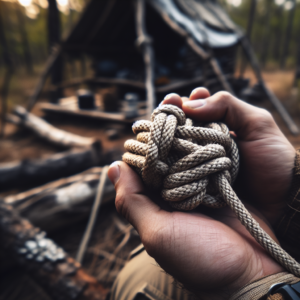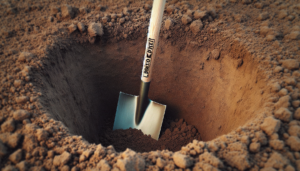
In a survival situation, finding ways to signal for help can be crucial for your rescue. Whether you find yourself lost in the wilderness or stranded in an isolated area, knowing effective methods to communicate your distress can increase your chances of being found. This article will explore various techniques that you can employ to signal for help in these challenging circumstances. From visual signals to auditory ones, you will discover practical strategies to alert potential rescuers of your presence and dire need for assistance.
How Can I Signal For Help In A Survival Situation?
When you find yourself in a survival situation, it is crucial to understand various ways to signal for help. These signals can potentially save your life by attracting the attention of rescuers or passing individuals. In this article, we will explore different methods and techniques for signaling in a survival situation.
Using Visual Signals
Visual signals are one of the most effective ways to attract attention in a survival situation. They can be seen from a distance and have a higher chance of catching the eye of potential rescuers. Some common visual signaling techniques include:
-
Smoke Signals: Creating a smoke signal can be done by building a fire and placing damp leaves or green vegetation on it. The resulting smoke can be seen from afar, especially in open areas or from elevated locations.
-
Mirrors or Reflective Surfaces: Reflective signals are highly visible, even during daylight. You can use a mirror, a piece of glass, or any other polished surface to reflect sunlight towards potential rescuers.
-
Clothing or Shelter: Use brightly colored clothing or materials to make yourself more visible. You can also create a makeshift shelter with brightly colored materials or tarps to attract attention.
-
Flashing Lights: Using a flashlight or any other source of light, create a pattern by flashing it in short bursts. This can be an effective method, especially during nighttime or in dimly lit areas.
Using Auditory Signals
In addition to visual signals, auditory signals can also be employed to alert others to your presence. These signals rely on sound and can be heard from a distance, even in challenging terrain or adverse weather conditions. Here are some common examples of auditory signals:
-
Shouting and Yelling: Producing loud and continuous shouts or yells can help draw the attention of nearby individuals or search parties.
-
Whistles: Emergency whistles produce a loud and distinct sound that can travel over long distances. Carry a whistle in your survival kit and use short bursts to signal for help.
-
Horns: Air horns or foghorns are powerful devices that emit a loud, attention-grabbing sound. These can be especially useful in open water or deserted areas.
-
Gunshots or Explosions: In certain situations, using gunshots or explosions as a signaling method may be necessary. However, ensure that you practice gun safety and only use this method as a last resort or when you have no other options.
Using Reflective Signals
Reflective signals are particularly effective during daylight hours, as they utilize the power of sunlight to catch the attention of rescuers. These signals can be achieved through different means:
-
Signal Mirrors: Signal mirrors are specifically designed with a reflective surface that can redirect sunlight towards potential rescuers. Hold the mirror at an angle and aim the reflection in the direction of the desired target.
-
CDs or DVDs: If you do not have a signal mirror, you can use CDs or DVDs as alternative reflective surfaces. Position the CD or DVD in the sunlight and angle it to reflect the light towards rescuers.
-
SOS Symbols: Arrange rocks, logs, or any other available materials to form an SOS symbol on the ground. This universally recognized distress signal can be easily noticed from an aerial perspective.
Using Fire Signals
Fire can be an excellent signaling tool, particularly during nighttime when visibility is limited. It can create a noticeable and distinct source of light and smoke, quickly catching the attention of those nearby. Here are some fire signaling techniques:
-
Three Fires in a Triangle: Create three separate fires in a triangular formation. This is an internationally recognized emergency signal that indicates distress and is easily distinguishable from other fires.
-
Smoke Patterns: By adding specific materials to the fire, you can produce differently colored smoke, such as green, to signal aircraft during daytime or white smoke for denoting your location.
-
Flares: Flares are specially designed pyrotechnic devices that generate bright lights and smoke. Carry flares in your survival kit and use them as a last resort when all other signaling methods fail.
Using Natural Resources for Signaling
When you are in a survival situation, it is vital to utilize the resources available in your environment for signaling. Nature provides various options that can effectively direct attention to your location. Consider the following natural signaling techniques:
-
Branches or Rocks: Create a large, visible arrow shape using branches, rocks, or any other material that can be easily arranged on the ground. This arrow can act as a guide for search parties or aircraft.
-
Scattered Leaves: If you are in a dense forest, clearing an area and scattering brightly colored leaves or objects on the ground can provide a visible contrast for potential rescuers.
-
Tree Blazes: Carve distinctive patterns or symbols on the sides of trees using sharp tools. These tree blazes can guide search parties or help them identify your location.
Using Electronic Devices for Signaling
In today’s world, electronic devices can offer a significant advantage when it comes to signaling for help in a survival situation. These devices can transmit distress signals over long distances or provide a means of communication. Here are some electronic signaling methods:
-
Cell Phones: If you have cellular coverage, using your cell phone to contact emergency services is the quickest and most direct way to signal for help. Ensure that you have a functional phone with sufficient battery life.
-
GPS or Satellite Messengers: Devices equipped with GPS or satellite technology can send distress signals and your location coordinates to rescue services. These are especially useful in remote areas with no cellular coverage.
-
Personal Locator Beacons: Personal Locator Beacons (PLBs) are small, portable devices that transmit an emergency distress signal via satellites. They can provide your exact location, increasing your chances of being rescued.
Using Emergency Whistles or Horns
Emergency whistles and horns are handheld devices designed to produce loud and attention-grabbing sounds. They can help you signal for help in a survival situation, especially in dense forests or areas where visibility is limited. Some key points to remember when using these devices:
-
Carry a Whistle or Horn: Ensure that you include a whistle or horn in your survival kit. These lightweight and compact devices are easy to carry and can be valuable tools in attracting attention.
-
Learn Specific Whistle Codes: Certain whistle codes, such as three short bursts for SOS, are universally recognized distress signals. Familiarize yourself with these codes to convey the extent of your emergency accurately.
-
Maintain Discipline with Sound: Whistles and horns are powerful tools, but it is essential to use them judiciously. Sound them intermittently to conserve energy and increase the likelihood of being heard by potential rescuers.
Using International Distress Signals
International distress signals are standardized forms of communication recognized worldwide. Understanding and using these signals can significantly increase the chances of being rescued. Familiarize yourself with the following international distress signals:
-
SOS: The internationally recognized distress signal is SOS, represented by three short signals, followed by three long signals, and then three short signals again. This signal can be transmitted via various methods, such as Morse code or auditory signals.
-
Mayday: Mayday is a distress call used predominantly in aviation and maritime emergencies. It is transmitted via radio communication and indicates a life-threatening situation that requires immediate assistance.
-
Pan-Pan: Pan-Pan is an urgent safety call used to indicate a serious situation that does not pose an immediate threat to life but requires assistance.
Using Morse Code Signals
Morse code is a method of communication that uses a series of short and long signals, known as dots and dashes, to convey messages. It can be transmitted visually or audibly, providing an effective means of signaling for help. Familiarize yourself with Morse code to utilize it as a signaling tool:
-
Light Signals: Use a flashlight, mirror, or any other light source to transmit Morse code signals. Short bursts of light represent dots, while longer bursts represent dashes.
-
Sound Signals: Auditory signals can also be used to transmit Morse code. Use a whistle, horn, or any other device capable of producing short and long bursts of sound.
-
Pattern Recognition: Learn to recognize Morse code signals from potential rescuers. Three short signals indicate SOS, while other combinations can be used to communicate specific messages or requests for assistance.
Using Animal Calls or Distress Signals
In certain situations, utilizing animal calls or distress signals can be effective for attracting attention. However, it is vital to exercise caution and knowledge of local wildlife to ensure that these signals are appropriate and safe to use. Consider the following points when utilizing animal calls:
-
Research Local Wildlife: Learn about the native animal species in your location and identify their distinct calls or distress signals. Mimicking these sounds can grab the attention of potential rescuers.
-
Avoid Dangerous Animals: Be aware of the potential risks associated with using animal calls. Some animals may perceive your call as a threat, putting you in a dangerous situation. Use this method only when it is safe to do so.
-
Practice and Preparation: Before attempting to use animal calls, practice them in a controlled environment. This will familiarize you with the sounds and ensure that you can produce them effectively and convincingly when needed.
In conclusion, signaling for help is a crucial aspect of survival in emergency situations. By understanding and utilizing various signaling techniques, such as visual signals, auditory signals, reflective signals, fire signals, natural resources, electronic devices, emergency whistles or horns, international distress signals, Morse code, and animal calls or distress signals, you increase your chances of being rescued. However, it is essential to prioritize your safety and use these methods wisely, considering your specific circumstances and available resources. Remember, effective signaling can be the key to your survival and eventual rescue.







